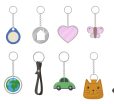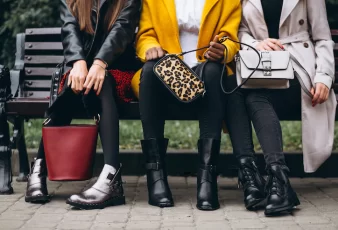You might be avoiding leather in your personal life for the animals or for the price tag. Fake leather options aren’t new: it’s been used to upholster furniture, make clothing, fashion footwear, and more, since the 19th century at times when real leather was too expensive, and unfit material for its purpose, or not readily available. The names for artificial leather often get lumped together and used interchangeably: leatherette, faux leather, pleather, vegan leather, etc. However, these are not all made the same way, from the same source materials, and this is important for look, quality, and sustainability reasons.
A lot of people think that artificial leather is cheaper than real leather. However, that is not the case. Secondly, people will artificial leather is better for the environment. They do not take into consideration that artificial leather is produced by chemical processes that lead to the release of dangerous fumes and gases in the environment. Buying natural leather strips that are affordable, durable, and better for the environment is a much better decision for a fashion brand.
Both real leather and most artificial leathers come with a host of problems. For authentic leather, animal cruelty usually tops the list, but it’s also tanned using a nasty chemical process involving formaldehyde, oil, synthetic and cyanide-based dyes, and even derivatives of coal tar. Waste from tanneries contains some hideous pollutants, too. The modern labor practices used to make leather goods are also far from ethical. Most artificial leathers are made by overlaying plastic-like PVC onto a natural or synthetic fabric like polyester. Aside from using an unsustainable petroleum product that comes hitched with a terrible list of production problems, the material isn’t porous or breathable, which is not great for footwear or clothing. And if you’ve ever sat on a leather couch or hot vinyl car seat in the summer, you know sweat accumulates from the lack of air to your skin. Gross. If you’re interested in avoiding real leather for cruelty reasons, there’s a fair chance you also support green living. You’ll then want to choose the best vegan leather option available: cork.
Cork is used in a variety of products. A prime example of the leather-look of cork can be found over at evecork.com with their showcase of luxury bags, packs, and wallets. The material looks like a gentle suede or soft leather. Their opulent line of accessories, made using expert cork harvesting practices, is a collection of soft, smooth, and beautiful bags. Cork is also used in flooring, shoes, home décor, and in trendy arts and crafts repurposing projects. It’s harvested from the cork oak that grows in parts of Africa and Europe. Trees aren’t cut down for their amazing cork: it’s the bark that’s removed and the tree continues to grow. In terms of labor, you’ll want to look out for unethical practices in all products you buy, so it’s wise to look into who makes it and where. Eve Cork openly shares how they fairly employ farmers and workers in Portugal, so you’re covered as far as handbags are concerned! If a company isn’t forthcoming with this information, be sure to contact them directly. If you don’t like their vague answer, do steer clear.
Sure, you’re avoiding wearing animal skins with any fake leather, but your artificial leather choice might still be polluting the environment and wasting unrenewable resources. Cork is the best option if you’re looking for what can be called True Vegan Leather. It’s not cruel to animals, and since it’s completely sustainable, buying products made from it protects the environment which all animals, including people, need to live.
Read More:




























